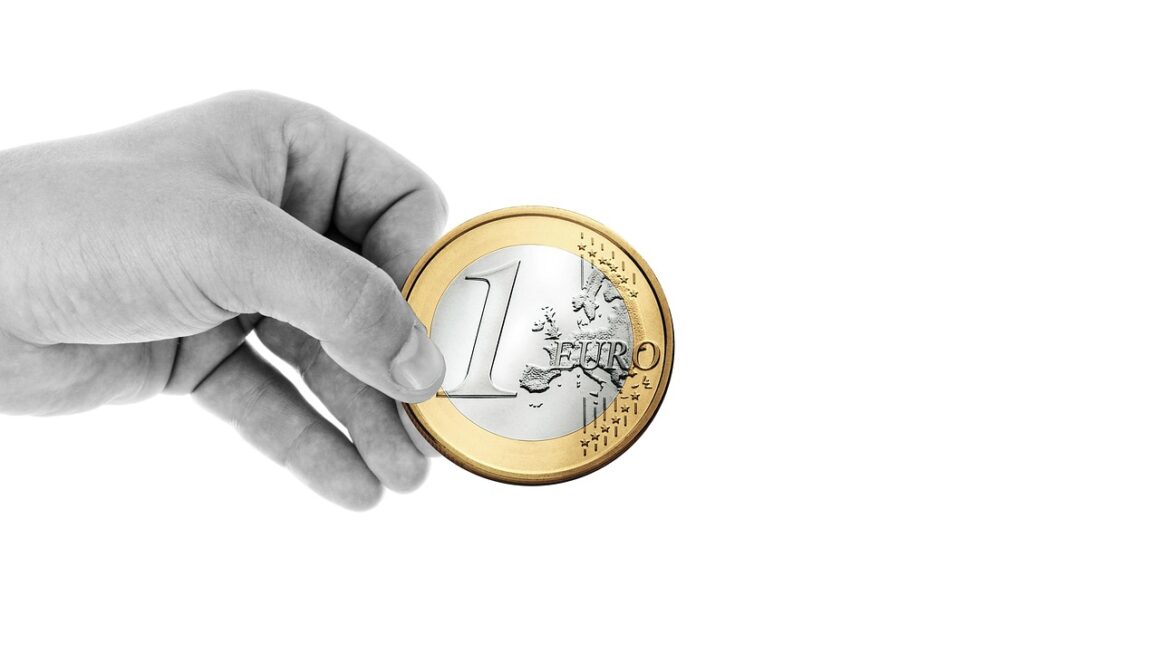Exchange Traded Funds (ETFs) have revolutionized the way investors access the market, offering a blend of diversification, liquidity, and cost-effectiveness that traditional mutual funds often struggle to match. Whether you’re a seasoned trader or just starting out on your investment journey, understanding the intricacies of ETF trading is crucial for building a well-rounded and successful portfolio. This comprehensive guide dives deep into the world of ETFs, covering everything from the basics to advanced trading strategies, empowering you to navigate the market with confidence.
Understanding ETFs: The Basics
What is an ETF?
An Exchange Traded Fund (ETF) is a type of investment fund that holds a collection of assets, such as stocks, bonds, or commodities, and trades on stock exchanges like individual stocks. Unlike mutual funds, which are typically priced once a day, ETFs can be bought and sold throughout the trading day, providing greater flexibility and liquidity. Think of it as buying a single share that represents ownership in a basket of underlying assets.
Key Features and Benefits of ETFs
- Diversification: ETFs offer instant diversification by providing exposure to a wide range of assets within a single fund. For example, an S&P 500 ETF provides exposure to the 500 largest publicly traded companies in the U.S., reducing the risk associated with investing in individual stocks.
- Liquidity: ETFs are highly liquid, meaning they can be easily bought and sold on exchanges throughout the trading day. This allows investors to quickly adjust their positions in response to market changes.
- Cost-Effectiveness: ETFs typically have lower expense ratios compared to actively managed mutual funds. This is because ETFs are often passively managed, meaning they track a specific index rather than relying on a fund manager to pick individual securities. Expense ratios can range from as low as 0.03% to upwards of 0.50%, depending on the ETF’s focus.
- Transparency: ETFs are required to disclose their holdings on a daily basis, providing investors with transparency into the fund’s composition.
- Tax Efficiency: ETFs can be more tax-efficient than mutual funds, as they generate fewer taxable events due to their structure.
Different Types of ETFs
The world of ETFs is diverse, catering to a wide range of investment objectives. Here are some common types:
- Equity ETFs: Track stock market indexes or sectors, such as the S&P 500, Nasdaq 100, or technology sector.
- Bond ETFs: Invest in government, corporate, or municipal bonds, providing exposure to fixed-income markets.
- Commodity ETFs: Track the prices of commodities such as gold, silver, or oil. These can be either physically backed or based on futures contracts.
- Currency ETFs: Allow investors to gain exposure to different currencies, such as the Euro or Japanese Yen.
- Inverse ETFs: Designed to profit from a decline in the value of an underlying index or asset. These are also called ‘short’ ETFs.
- Leveraged ETFs: Use derivatives and debt to amplify returns (and losses) of an underlying index. These are often best suited for short-term trading due to their compounding effects.
Setting Up Your ETF Trading Account
Choosing a Broker
Selecting the right brokerage is a crucial first step in ETF trading. Consider these factors when making your choice:
- Commissions: Some brokers offer commission-free ETF trading, while others charge a per-trade fee.
- Account Minimums: Some brokers may require a minimum account balance to open an account or trade ETFs.
- Trading Platform: Look for a user-friendly platform with charting tools, research resources, and mobile accessibility.
- Investment Options: Ensure the broker offers access to a wide range of ETFs that align with your investment goals.
- Customer Service: Evaluate the broker’s customer service reputation and availability.
- Example: Fidelity, Charles Schwab, and Vanguard are popular choices that offer commission-free ETF trading and comprehensive platforms.
Funding Your Account
Once you’ve chosen a broker, you’ll need to fund your account. Common funding methods include:
- Bank Transfer: Transfer funds electronically from your bank account.
- Check: Deposit a check into your brokerage account.
- Wire Transfer: Transfer funds via wire transfer (usually for larger amounts).
Understanding Order Types
Familiarize yourself with different order types to execute your trades effectively:
- Market Order: An order to buy or sell an ETF at the best available price. Executes quickly but doesn’t guarantee a specific price.
- Limit Order: An order to buy or sell an ETF at a specific price or better. Offers price control but may not execute if the market doesn’t reach your desired price.
- Stop-Loss Order: An order to sell an ETF when it reaches a specified price, helping to limit potential losses.
- Stop-Limit Order: Similar to a stop-loss order, but it becomes a limit order once the stop price is reached.
Developing Your ETF Trading Strategy
Defining Your Investment Goals
Before diving into ETF trading, clearly define your investment goals:
- What are you saving for? (e.g., retirement, a down payment on a house, college tuition)
- What is your time horizon? (short-term, medium-term, long-term)
- What is your risk tolerance? (conservative, moderate, aggressive)
Your investment goals will influence your ETF selection and trading strategy.
Identifying Suitable ETFs
Based on your goals and risk tolerance, identify ETFs that align with your investment objectives. Consider factors such as:
- Expense Ratio: Lower expense ratios result in higher net returns.
- Tracking Error: Measures how closely an ETF tracks its underlying index.
- Trading Volume: Higher trading volume indicates greater liquidity and tighter bid-ask spreads.
- Fund Size (AUM): Larger ETFs tend to be more liquid and have lower tracking error.
- Example: If you’re a long-term investor with a moderate risk tolerance, you might consider investing in a broad market index ETF like the Vanguard Total Stock Market ETF (VTI). If you’re looking for shorter-term gains and can tolerate more risk, sector-specific ETFs like the Technology Select Sector SPDR Fund (XLK) may be more appropriate.
Common ETF Trading Strategies
- Buy and Hold: A long-term strategy of buying ETFs and holding them for an extended period, regardless of market fluctuations. Suitable for long-term goals like retirement.
- Dollar-Cost Averaging: Investing a fixed amount of money in ETFs at regular intervals, regardless of the price. Helps to reduce the impact of market volatility.
- Sector Rotation: Shifting investments between different sector ETFs based on economic cycles or market trends. Requires more active management and analysis.
- Trend Following: Identifying and following market trends using technical indicators or moving averages.
- Swing Trading: Holding ETFs for a few days or weeks to profit from short-term price swings. Requires active monitoring and risk management.
Risk Management Techniques
Effective risk management is crucial for successful ETF trading:
- Diversification: Don’t put all your eggs in one basket. Diversify your ETF holdings across different asset classes and sectors.
- Stop-Loss Orders: Use stop-loss orders to limit potential losses on individual trades.
- Position Sizing: Determine the appropriate size of each trade based on your risk tolerance and account size.
- Regular Monitoring: Monitor your ETF holdings and market conditions regularly, adjusting your strategy as needed.
- Avoid Overleveraging: Don’t use excessive leverage, as it can amplify both gains and losses.
Advanced ETF Trading Strategies
Using Options with ETFs
Options contracts can be used to enhance returns, hedge risk, or generate income from ETF holdings. Some common options strategies include:
- Covered Calls: Selling call options on ETFs you already own to generate income.
- Protective Puts: Buying put options to protect against downside risk in your ETF holdings.
- Straddles and Strangles: Using both call and put options to profit from significant price movements in either direction.
- Important Note: Options trading involves significant risk and is not suitable for all investors.
Arbitrage Opportunities
Arbitrage opportunities can arise due to price discrepancies between an ETF’s market price and its net asset value (NAV). Authorized participants (APs) can exploit these discrepancies by creating or redeeming ETF shares. While these opportunities are quickly arbitraged away, understanding the mechanism can provide insights into ETF pricing.
Using Technical Analysis
Technical analysis involves analyzing price charts and using indicators to identify potential trading opportunities. Some common technical indicators used in ETF trading include:
- Moving Averages: To identify trends and potential support/resistance levels.
- Relative Strength Index (RSI): To measure the momentum of price movements and identify overbought/oversold conditions.
- MACD (Moving Average Convergence Divergence): To identify changes in the strength, direction, momentum, and duration of a trend in a stock’s price.
- Bollinger Bands:* To measure volatility and identify potential breakout opportunities.
Conclusion
ETF trading offers a versatile and accessible way to participate in the financial markets. By understanding the basics of ETFs, setting up a trading account, developing a sound trading strategy, and implementing effective risk management techniques, you can increase your chances of achieving your investment goals. Remember to stay informed about market trends, continuously educate yourself, and adapt your strategies as needed. While ETFs provide diversification and cost-effectiveness, thorough research and careful planning are essential for long-term success in the world of ETF trading.




